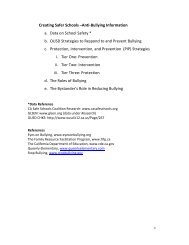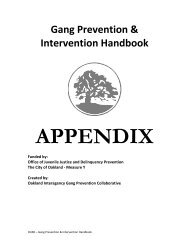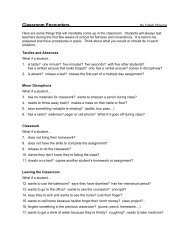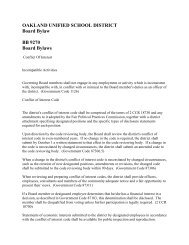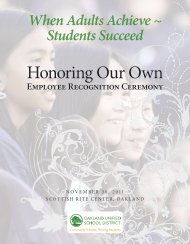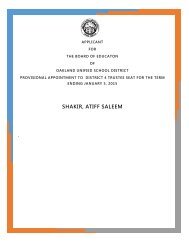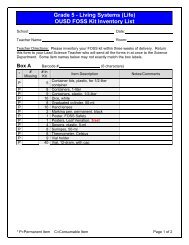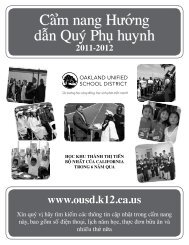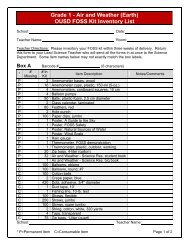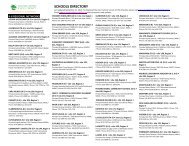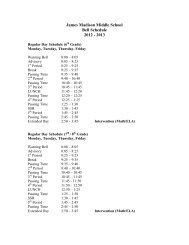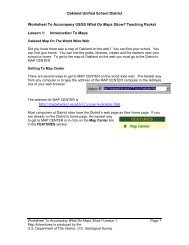Science Framework, part 1 - Free Downloads (CA Dept of Education)
Science Framework, part 1 - Free Downloads (CA Dept of Education)
Science Framework, part 1 - Free Downloads (CA Dept of Education)
- No tags were found...
You also want an ePaper? Increase the reach of your titles
YUMPU automatically turns print PDFs into web optimized ePapers that Google loves.
2Introduction tothe <strong>Framework</strong>California is a world leader inscience and technology and, asa result, enjoys both prosperityand a wealth <strong>of</strong> intellectual talent. Thenation and the state <strong>of</strong> California havea history that is rich in innovation andinvention. Educators have the opportunityto foster and inspire in students aninterest in science; the goal is to havestudents gain the knowledge and skillsnecessary for California’s workforce tobe competitive in the global, information-basedeconomy <strong>of</strong> the twenty-firstcentury.The <strong>Science</strong> <strong>Framework</strong> for CaliforniaPublic Schools is the blueprint forreform <strong>of</strong> the science curriculum, instruction,pr<strong>of</strong>essional preparation anddevelopment, and instructional materialsin California. The framework outlinesthe implementation <strong>of</strong> the <strong>Science</strong>Content Standards for California PublicSchools (adopted by the State Board <strong>of</strong><strong>Education</strong> in 1998) 1 and connects thelearning <strong>of</strong> science with the fundamentalskills <strong>of</strong> reading, writing, and mathematics.The science standards containa concise description <strong>of</strong> what to teachat specific grade levels; this frameworkextends those guidelines by providingthe scientific background and the classroomcontext.Glenn T. Seaborg, one <strong>of</strong> the greatscientific minds <strong>of</strong> this era, definedscience as follows: “<strong>Science</strong> is an organizedbody <strong>of</strong> knowledge and a method<strong>of</strong> proceeding to an extension <strong>of</strong> thisknowledge by hypothesis and experi-ment.” 2 This framework is intended to(1) organize the body <strong>of</strong> knowledgethat students need to learn during theirelementary and secondary school years;and (2) illuminate the methods <strong>of</strong> sciencethat will be used to extend thatknowledge during the students’ lifetimes.Although the world will certainlychange in ways that can hardly be predictedin the new century, Californiastudents will be prepared to meet newchallenges if they have received asound, basic education. This frameworkoutlines the foundation <strong>of</strong> scienceknowledge needed by students and theanalytical skills that will enable them toadvance that knowledge and absorbnew discoveries.Audiences for the<strong>Framework</strong>One <strong>of</strong> the primary audiences forthis framework is the teachers who areresponsible for implementing the sciencestandards. These teachers are elementaryand middle school teacherswith multiple-subject credentials,middle and high school teachers withsingle-subject credentials in science,and those who may be teaching outsidetheir primary area <strong>of</strong> expertise. The<strong>Science</strong> <strong>Framework</strong> is designed to providevaluable insights to both noviceand expert science teachers.For designers <strong>of</strong> science instructionalmaterials, the framework may



